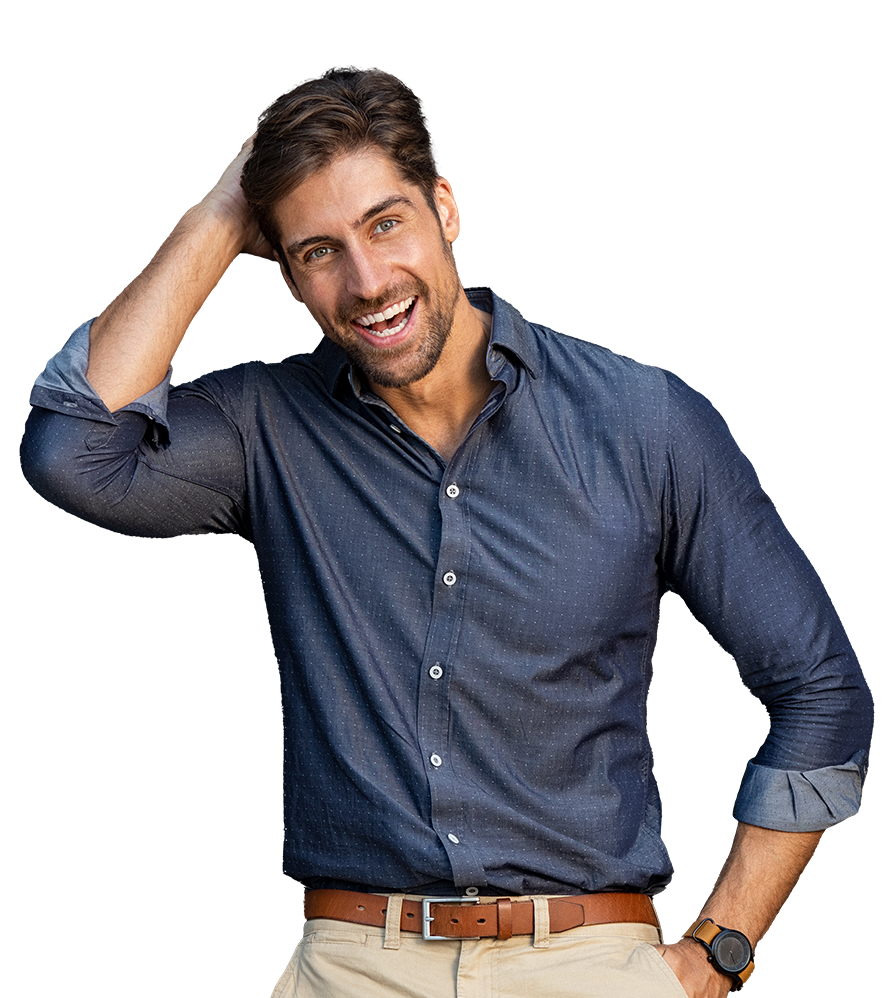Dark spots, wrinkles, grey hair…each a sign of aging. And while everyone hopes to age gracefully, we also know that appearance can add years to your perceived age. And that’s not such a great confidence builder, to say the least.
hopes to age gracefully, we also know that appearance can add years to your perceived age. And that’s not such a great confidence builder, to say the least.
Take hair and scalps, for example. As the aging process advances, hair follicles begin to shrink and produce thinner, shorter hair strands. In some cases, follicles stop producing new hair entirely, which leads to hair loss. As you approach your 50s and 60s, these changes can begin to appear at a faster rate. Read on to find out why and, more importantly, what you can do about it.
How Hair Grows
Hair is made up of the hair follicle and shaft. The follicles anchor each individual strand to the scalp with a hair bulb, which is made of protein cells. This is where growth happens. As blood circulates through your body and eventually to your scalp, it nourishes roots – along with oxygen – and triggers protein cell division every 23 – 72 hours, creating the hair shaft and making it grow toward the surface. As hair pushes its way to the surface, it passes tiny glands that add an oil (sebum) to each hair strand, making it shiny and soft. The blood vessels also transfer hormones that can alter hair’s growth cycle and structure at different times of your life.
Hair and Age
We lose an average of 50 to 100 hairs every day, and in most cases barely notice. Hair grows quickest between ages 15 and 30 and slows once we approach our 40s and 50s. More strands begin to fall out with fewer growing back to take their place. In addition to age, the rate at which hair grows is also determined by genetics, hormones, nutrition, and other factors. While there is nothing you can do to alter your genetics or age, you can take steps to support healthy hair growth during your maturing years.
Eat Well, Exercise, Hydrate, and Rest
When it comes to nourishment, your vital organs always get first dibs. So, if your body is not getting what it needs, hair follicles will suffer. For optimal hair health no matter your age, once entering your maturing years, make sure your diet includes adequate amounts of zinc, iron, biotin, protein, omega-3 fatty acids, calcium, and other vitamins and minerals responsible for hair and scalp health. Some sources include legumes, eggs, fish, nuts, dairy, leafy greens, and a variety of fruit.
- Legumes —Legumes are loaded with protein, as well as zinc, iron, and biotin — mandatory for healthy hair growth. Biotin deficiency can trigger brittle hair and hair loss. Other foods that contain biotin include egg yolk, soy flour, liver, and yeast.
- Fish sources —Protein, omega-3 fatty acids, iron, and vitamin B12 available from fish can help stop dry scalp and improve your hair color.
- Nuts —Nuts have an abundant supply of selenium, which is vital for a balanced scalp. Nuts also contain zinc and alpha-linolenic acid, which support hair growth and prevent shedding.
- Dairy —Dairy products are an excellent calcium source, the key to robust hair growth.
If you’re between 25 and 40, you may be reading this thinking: “Nothing to worry about just yet.” Worry, no. But care about? Yes. It’s never too early to start living a healthier lifestyle. If, on the other hand, you’re 55 and older tan think “the damage is done and now I just need to live partially bald,” that’s not necessarily true either. So, tell you what. Hope on the phone, computer, or mobile device, and schedule a free consultation right now with DiStefano Hair Restoration Center. Think about it – if you feel better about yourself, aren’t you bound to feel better overall?


